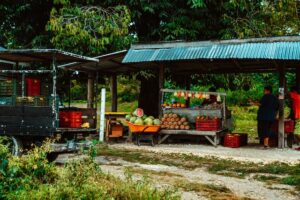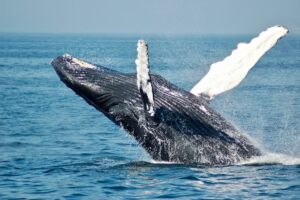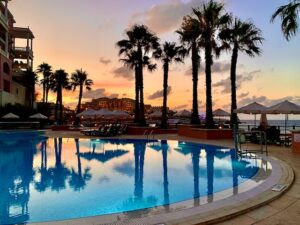On a visit to Belize, you’ll see sharks swimming across coral reefs and jaguars skulking through jungle foliage – two natural wonders you won’t want to miss on your travels! Explore Belize’s wildlife and nature reserves through snorkeling, kayaking, sunset cruising, hiking trails or staying in luxury wilderness lodges.
In April 2019, this small country made big strides toward environmental preservation, announcing it would triple the protected areas within Mesoamerican Barrier Reef system.
Rainforests
Belize’s rainforest is home to an astonishing variety of animals and plants, such as endangered species like scarlet macaws and jaguars. Belize boasts one of the largest remaining expanses of Caribbean rainforest; over one-third of Belizean forests are protected habitats; ecotourism supports conservation efforts while providing jobs and income for local communities.
Belize remains mostly unspoiled wilderness, and Belize officials have made protecting their country’s natural resources a top priority. Their dedication has paid dividends as wildlife and flora tourism has become the second-leading source of national revenue. Belize rainforests abound with exotic birds, wild orchids (over 250 different varieties are found there!), and gorgeous flowers; not to mention hundreds of animal species such as jaguars and howler monkeys.
Rainforests offer many pristine natural beauties, from deep blue swimming holes to towering waterfalls crashing into the jungle below. Many of these waterways are private and allow for peaceful swims in the thicket.
The rainforest is home to several ancient Maya cities that were only recently discovered amidst dense vegetation. Pyramids, palaces, and stelae can often be found within its borders.
Belize leads the world in biodiversity protection, and its forest reserves serve as prime examples. They provide vital refuge for rare and threatened species; in addition, a secure corridor connects these forest reserves with protected areas in neighboring countries, providing vital shelter for rainforest animals.
As well as serving as natural sanctuaries for wildlife that inhabits them, Belize’s protected areas serve as the basis of outdoor adventure activities for travelers. Visitors can explore the jungle on foot or horseback, cave dive, and kayak rivers – multi-day treks through rugged rainforest trails can allow travelers to truly immerse themselves in nature! Aside from these natural attractions, Belize also provides plenty of other recreational options like mountain biking and zip lining!
Savannas
Belize boasts an abundance of wildlife and ecosystems that draws tourists from around the globe. National parks and sanctuaries allow guests to experience its diverse habitats – rainforests, wetlands and savannas among them – providing botanists, ornithologists, and mammalogists an ideal setting in which to study.
The savannahs of Belize and southern Mexico form an ecoregion unto themselves, while their floral signature firmly places them within the Neotropical realm (Puig 1972, Perez-Garcia and Hicks 2001, Bridgewater et al. 2002, Varguez-Vazquez and Ortiz-Diaz 2012).
Contrary to African savannas that inspired ideas of fire management during the twentieth century, less is known about the history of savanna fires in Belize and Guyana. Local relationships among fire, ecology, livelihoods, and commercial interests could likely play a crucial role in determining any interventions like prescribed burning in these two countries as they did elsewhere in Africa.
Although Belize and Guyana are peripheral colonial economies, international development aid and carbon finance may become available for projects related to savanna fire management in these small rural communities. Therefore, such projects must take into account how colonial narratives of fire suppression have affected and continue to impact local relationships.
Belize and southern Mexico’s lowland savanna is home to mammals, birds, reptiles, amphibians and amphibians as well as their floral diversity. Cockscomb Basin Wildlife Sanctuary in central Belize hosts four feline species as well as howler monkeys; nearby Crooked Tree Wildlife Sanctuary provides opportunities to spot jabiru storks, Northern jacanas, black howler monkeys and Morelet’s crocodiles.
Bladen Nature Reserve, known as the ‘crown jewel’ of Belize’s protected area system, provides habitats and refuge for iconic species like the Jaguar (Panthera onca) and Scarlet Macaw (Ara Macao). The reserve offers refuge to over 57% of mammal species found within Belize and plays a pivotal role in replenishing downstream forest and freshwater habitats restocking efforts; thus making an integral contribution towards Mesoamerican Biological Corridor connectivity efforts as part of Mesoamerican Biological Corridor; while also supporting local communities through wildlife benefits that contribute directly back into local communities’ livelihoods.
Monkeys
At home in Belize’s rainforests are many fascinating primates, including the rare Geoffroy’s spider monkey and Yucatan black howler monkey. Each species possesses individual identifying features, adapts to various habitats, and has distinct dietary preferences; unfortunately, both species are endangered due to human interference with their environments and an increase in people keeping monkeys as pets.
No matter their plight, there remains hope for these extraordinary animals. Organizations like Global Nomadic’s volunteer team in Belize play an invaluable role in rescuing primates from pet shops and successfully returning them back to the wild, where they belong. Rehabilitated monkeys are nursed back to health before socialized into troops before receiving training on forest climbing skills necessary for life in the wild – an experience many volunteers find transformative enough to dedicate themselves full-time conservation work.
Howler monkeys are one of the loudest New World monkeys and are famous for their long prehensile tail which helps them grip tree branches. They tend to travel in groups of four-12 individuals led by a dominant male.
These large primates typically weigh in at 20 pounds and thrive in Belize’s lush rain forests, traveling up to one kilometer per day while jumping from tree to tree and howling their signature howl that is sure to upend any jungle adventure!
One great place to spot these incredible animals is along the Monkey River, so named for its abundant population of monkeys who inhabit its lush banks. Serving as the primary watershed in southern Belize and providing rich biodiversity opportunities. Nearby Cockscomb Basin Wildlife Sanctuary contains the world’s only jaguar reserve while providing sanctuary to spider monkeys and howler monkeys.
Birds
Belize’s birdlife is truly remarkable. Known for being an incredible hotspot for birdwatching, with 605 species inhabiting various habitats from rainforest to savanna to mangroves and coral reefs.
Belize is an absolute tropical birdwatcher’s dream destination, boasting an array of hummingbirds, parrots, kingfishers, herons, and herons that can be spotted at various nature reserves across the country. Look out for colorful Keel-billed Toucans or Black Collared Hawks; woodpeckers will not disappoint either!
Belize’s tropical birds stand out from their northern counterparts by boasting vibrant hues in their feathers; male birds often boast bolder color schemes than their female counterparts. Tanagers, orioles, and hummers especially stand out with their vibrant jewel-tone hues that catch your eye.
Birders will discover an abundance of opportunities for birding across Belize. Wildlife tours often include visits to such hotspots as Crooked Tree Wildlife Reserve, Gallon Jug Conservation Society or Programme for Belize’s Rio Bravo Conservation & Management Area as a good place to begin exploring its many species.
Protected areas play an essential role in Belizean biodiversity. They serve as vital natural corridors that sustain and protect species such as jaguars (Panthera onca), scarlet macaws (Ara macao), and white-lipped peccaries (Tayassu pecari). Rio Bravo Conservation & Management Area also plays host to Programme for Belize which conducts research, education, professional training programs, and environmental awareness activities for local communities.
An unforgettable wildlife tour in Belize can be an amazing adventure, providing the chance to encounter exotic flora and fauna. Belizean rainforests, savannas, and coral reefs provide homes to mammals, reptiles, amphibians, fish species as well as marine life – making for an incredible adventure that you won’t soon forget!
An extraordinary luxury wildlife adventure in Belize will transport you into its incredible heart, offering the opportunity to see diverse creatures from luxurious wilderness lodges. From viewing sharks along its reef to jaguars in its jungle, Belize’s stunning landscape provides an immersive connection with nature that offers an incredible wildlife encounter experience.




